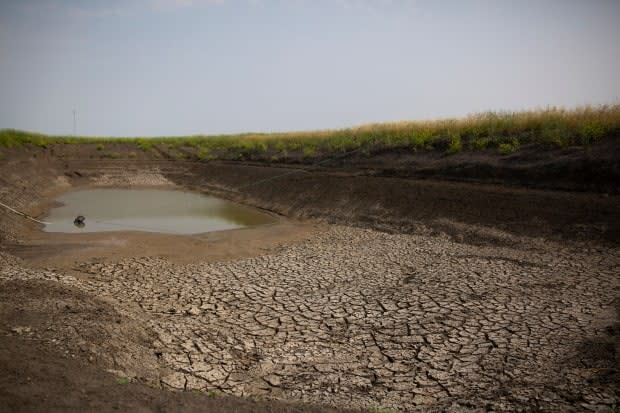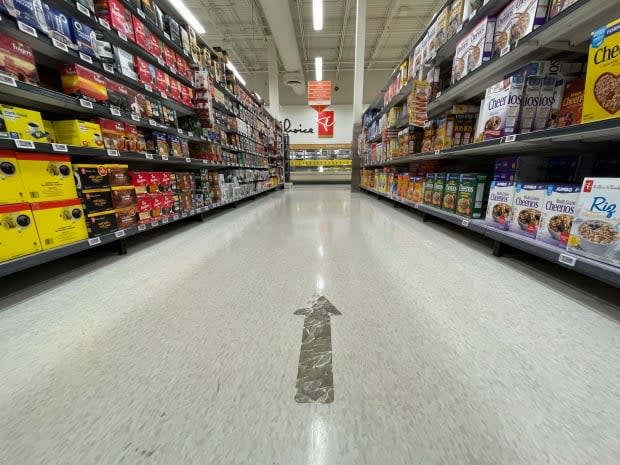Farmers say they're ready to cut the carbon in Canada's diet — but they need government help

The role of agriculture in climate change didn't get much attention at the COP26 summit — much to the chagrin of activists.
"The cow in the room is being ignored," one told the Guardian during the two-week gathering in Glasgow.
But the leaders of three Canadian agrifood groups told CBC's The House in a panel discussion airing this weekend that there's a growing appetite among Canadian farmers for working with Canadian governments to cut emissions and find ways to take carbon out of the environment.
"So there are a lot of farmers who for a long time have been experimenting with ways they can reduce emissions on their farm, thinking about ways that we can increase soil carbon — drawing carbon dioxide out of the air and storing it in our agricultural soils," said Brent Preston, an Ontario vegetable farmer and director of a national organization called Farmers for Climate Solutions.
"But we've been largely unsupported in this work and we realize that we need public support, federal and provincial support, to scale these practices to make them widespread and to really have a significant impact on the emissions of our sector and also our ability to withstand the inevitable changes that we know are going to come in the climate."
LISTEN | Climate change on Canada's farms:
The high climate cost of food production
The agricultural and food processing industries employ more than two million people in Canada and generate nearly $140 billion dollars in revenue each year. That represents just over 7 per cent of the Canadian economy.
But as important as farming and food are to Canadians, the sector is also a significant source of carbon dioxide emissions — generating nearly 73 megatonnes in 2019.
It's no surprise, then, that the country's agriculture ministers cited addressing climate change as one of the goals of a new five-year plan for the industry at their meeting this week in Guelph, Ontario.
Mary Robinson, president of the Canadian Federation of Agriculture, was at that meeting. She told The House that the emphasis on reducing emissions can't come at the expense of farmers themselves.
"I think the message needs to be that we can't do this at the expense of producing food," she said. "We can't destabilize our food supply systems here, or our economy."
Not enough rain here, too much there
Farmers are on the front lines of climate change — coping with prolonged droughts in some parts of the country and flooding in others.
And then there are the economic factors. Production costs are rising — in some cases higher and faster than the prices paid to farmers.
Many farmers are doing what they can already to reduce emissions from their operations — leaving fields untilled to store carbon, or protecting stands of trees and wetlands.

Robinson, who operates a 2,000-acre farm on Prince Edward Island, said the ministers meeting in Guelph understood the importance of working with them to draft climate goals for the sector.
"I think probably one of the most important things we heard was a sense of commitment to have a collaborative approach to solving these challenges and opportunities that exist in front of us," she said. "We can't stress enough just how important it is that farmers be at the table for these conversations because we have to make sure that any of the solutions that are proposed … that they're practical and that they are based on science."
The federal budget included $270 million over two years to support farmers in reducing emissions, protecting wetlands and converting their operations to clean energy.
The competitive pressure to cut carbon
All three panellists said it's a great start. But Preston said Canada still lags far behind the United States and European Union in helping farmers adopt more sustainable methods.
An analysis conducted by his organization found the U.S. under former president Donald Trump spent 13 times more than Canada on a per-acre basis, while the European Union invested 73 times more.

"What it means is that farmers in other jurisdictions are getting more support to transition to the sort of low-GHG production system that we need to adopt here," he told The House.
"And increasingly, we're seeing international buyers, food companies and brokers demanding lower GHG products from their supply chains. So if they can't get those low-GHG products from Canada, they're going to find them from other places that are getting more support to adopt these practices."
Still, the carrot may not be enough to convince reluctant farmers to make the shift, said Cedric MacLeod, executive director of the Canadian Forage and Grassland Association.
Convinced by the carbon tax
MacLeod raises 100 to 120 head of grass-fed cattle on his New Brunswick farm. He said the federal price on carbon is the stick needed to convince a large group of farmers who are unwilling to adopt more sustainable methods of raising livestock.
"You know, I worked for a decade and a half in the space and trying to encourage some of these conservation practices and you know, we always see some success. But there's still a bloc that hangs in the back that just really resists that change," he said.
"And I think what we're finding is that the carbon tax is really the bump that's going to move those growers forward. So if you don't want to innovate, then you're going to get taxed."
So while some climate activists complain that the COP26 summit didn't do enough to deal with agriculture's role in the climate crisis, some farmers here are working to ensure that their efforts to bring in more sustainable practices don't come a cropper.


